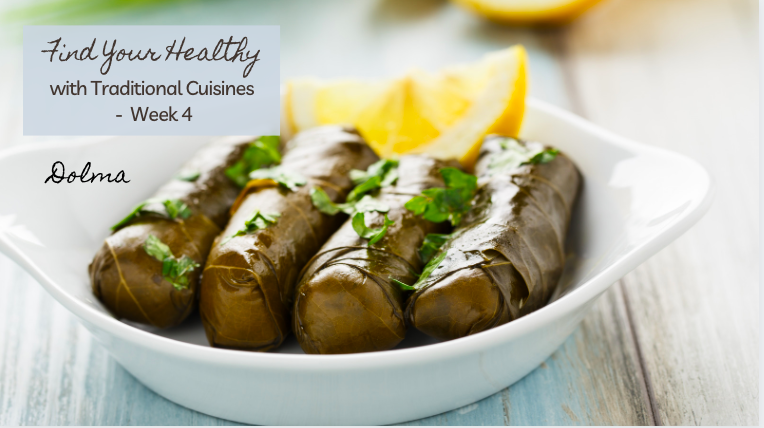
*To celebrate National Nutrition Month, we have a 5-week series of guest posts written by Deepanshi Salwan, MPH candidate and a dietetic graduate student at the University of Toronto.**
Welcome back to week 5 of the Nutrition Month 2021 blog series! It is the last post of the series. Thank you all for following along!
This year Nutrition Month centres on the idea that healthy eating looks different for everyone. It is not a one-size-fits-all approach, and your healthy eating will look different from someone else’s healthy eating based on culture, food traditions, personal circumstances, and nutritional needs.
To honour Nutrition Month, I have teamed up with Registered Dietitians and Dietetic Graduate Students from diverse cultural backgrounds to put together a Nutrition Month 2021 blog series! Each week for the month of March, different dietitians and dietetic students will share their food traditions, cultural recipes, and the importance of culture in healthy eating.
Embrace your heritage through cultural foods!
In Week 1, we talked about how cultural foods should be a part of your healthy meals. Read the post here.
In Week 2, we talked about the importance of forming social connections through cultural food. You can find the post here.
In week 3, we talked about the importance of instilling cultural food heritage in your children. You can find the post here.
In week 4, we talked about building a community that appreciates everyone’s food cultures. Read the post here.
Today we will succinctly summarize the valuable lessons from previous weeks and provide an action plan to help you embrace your cultural foods. To wrap up this series, we have my colleagues Lucia Weiler and Lalitha Taylor with us.

Lucia Weiler, RD, PHEc
Lucia Weiler, RD, PHEc
Instagram: @LuciaWeilerRD
Twitter: @LuciaWeilerRD
- What’s your cultural background?
I am Hungarian.
- What is the meaning of food in your culture? / How is food used in celebrations or traditions?
Food is family – and food is love. Hungarians know how to cook everything – snout to tail, farm to table. Many like my grandmother and sister are excellent bakers too though that’s not my forte.
- What is your favourite cultural ingredient or food or recipe?
Hungarian Cuisine in short! Paprika is the heart of Hungarian cuisine and the traditions go all the way back to the first Hungarians, and some of the dishes have been cooked the same way for hundreds of years. Here is the resource that lists our traditional dishes.

Hungarian Chicken Paprikás with Nokedli (Image: Canva)
Chicken Paprikás is a classic simple and good recipe. I make it regularly! Here is the recipe.
Ingredients:
2 ½ -3 lb chicken thighs or drumsticks, 2 onions, chopped, 2 garlic cloves, minced, 2 tbsp vegetable oil, 2 tbsp Hungarian ground paprika, ½ tsp ground black pepper, 2 bell peppers, chopped, 2 tomatoes, chopped, 2 cups water or low sodium chicken broth, ½ cup sour cream, 1 tbsp flour
Instructions: In a large skillet, heat oil and brown chicken on all sides – remove chicken to a plate. Next, add onion to the skillet and cook till golden brown. Add garlic, pepper and tomatoes and cook for another 3 minutes. Turn off heat and stir in the paprika and ground black pepper. Return chicken to the skillet and mix well. Add water or chicken broth until chicken is mostly covered. Bring to boil, cover, reduce heat and simmer for 30 minutes. In a small bowl, mix sour cream and flour until the mixture is smooth. Add the sour cream mixture to the chicken paprikas and simmer for 5 minutes until sauce is thickened. Serve with Hungarian nokedli (small dumplings) or penne or rotini. [For a vegetarian version, replace chicken with tofu cubes and reduce cooking time to 10 minutes].
Dietitian’s tip: Serve some veggies on the side such as steamed broccoli or green beans. A fresh cucumber or tomato salad is also fitting. Enjoy! Jó étvágyat!
4. What would you like to say to Canadians during National Nutrition Month?
Enjoy and explore how your culture, food traditions, personal circumstances & nutritional needs all contribute to what healthy looks like for you. Reach out to a registered dietitian to support your healthy eating journey.

Lalitha Taylor, RD
Lalitha Taylor, RD
Instagram: @lalithataylor_rd
Twitter: @lalithataylor
1. What’s your cultural background?
I am half South Indian and the other half is a mixture of Guyanese, Dutch and Bajan.
- What is the meaning of food in your culture? / How is food used in celebrations or traditions?
Food in many ways means love to me in my culture. After I left my parent’s home and moved away, every time I returned to see them the first thing my Dad would say is, “Are you hungry? What do you want to eat?” Food has always been a means for my parents to show their care, warmth and love.
To this day, mom will spend days meticulously preparing Indian dishes for special events to ensure we always have enough plus some to share with others. Given my diverse background—celebrations usually include a food combination of Indian, Guyanese, Ukrainian and more. Food is the centre of stories, laughter, crying and celebration. In our culture, food is what draws us together and is always offered to family and friends no matter what time of day.

Indian Dahl served with Basmati Rice (Image: Canva)
3. What is your favourite cultural ingredient or food or recipe?
Dahl is an Indian stew and my favourite recipe. It’s comfort food and reminds me of my parents. I now make dahl for my daughter and one day, I suspect she will make dahl for her family. It warms my heart to know that these foods will be passed down from generation to generation along with the positive nostalgic memories. You can find a Dahl recipe here.
4. What would you like to say to Canadians during National Nutrition Month?
There is no “cookie-cutter” approach to our eating—especially when we put into context the uniqueness of everyone’s background which includes honouring people’s culture, food preferences and traditions.
Bottom Line
Your cultural foods and traditions are an expression of your identity! They give you comfort, remind you of favourite memories, and help you bond with loved ones. They also give your child a sense of belonging. Cultural foods are fulfilling and they nourish your body and soul. They make you happy! This is why cultural foods and traditions are so important for your health and wellbeing.
Takeaways
1. Make cultural foods a part of your healthy eating
- Registered Dietitians can provide you with personalized nutrition advice. They can work with you to incorporate cultural foods in ways that are balanced and satisfying. Click here to find a dietitian near you.
2. Connect with your loved ones through your cultural foods and traditions
- Grow, harvest, fish, hunt, and prepare foods in traditional ways with loved ones
- Celebrate occasions and special holidays with cultural foods and practices
- Eat the same cultural dish together with your family, in-person or virtually
3. Foster your children’s connection to your cultural heritage through food
- Cook together a new dish from your culture
- Ask them to notice aromas and flavours during cooking and eating
- Talk to them about cultural ingredients, how they are produced and used in recipes
- Add a cultural ingredient to foods they currently enjoy eating
- Explore grocery stores, bakeries and restaurants that offer your cultural foods
- Share your stories and memories with foods from your culture
4. Build a community that appreciates everyone’s food cultures
- Host a potluck where everyone brings a traditional dish and spend time sharing the meaning of these foods (of course, post COVID!)
- Try a recipe from a different culture – find them online or ask someone you know
- Explore the International Aisle in grocery stores
- Dine-in or order take out from different ethnic restaurants
- Be curious and ask questions or read about other cultures’ food traditions
- Attend cultural food festivals like Pan Asian Food Festival and Taste of Danforth
5. Embrace and flaunt your cultural food traditions
-
- Connect with community members or Elders to learn more about your food traditions
- Talk to others about the significance of your cultural dishes
- Post photos of your cultural foods on social media. It is a great conversation starter
I thank Lucia and Lalitha for their time and contribution to this post.

Deepanshi Salwan
Written by: Deepanshi Salwan, MPH candidate – Deepanshi is a dietetic graduate student at the University of Toronto. Her nutrition philosophy embraces moderation without deprivation. She believes that healthy eating does not have to be complicated and hopes to inspire her audience to live more happy and healthy lives! You can find her on Instagram @deeconstructing_nutrition.
 *To celebrate National Nutrition Month, we have a 5-week series of guest posts written by Deepanshi Salwan, MPH candidate and a dietetic graduate student at the University of Toronto.**
*To celebrate National Nutrition Month, we have a 5-week series of guest posts written by Deepanshi Salwan, MPH candidate and a dietetic graduate student at the University of Toronto.**








